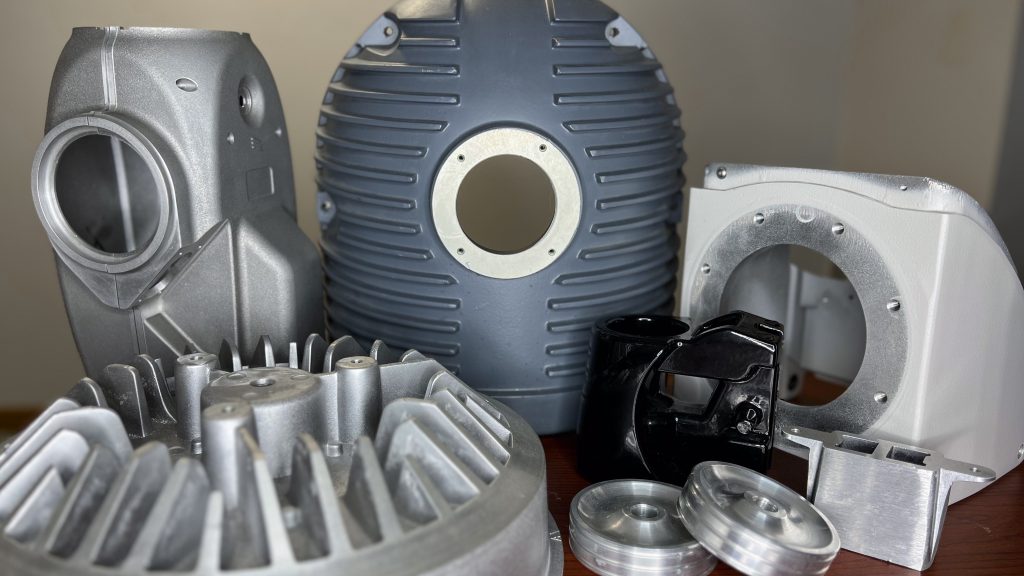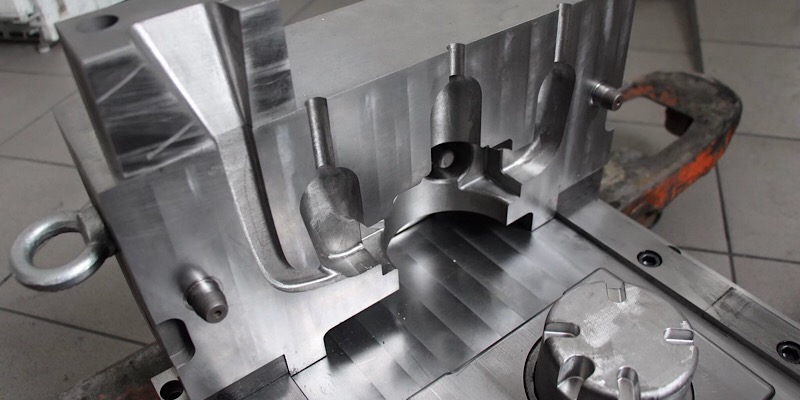The Several Uses of Aluminum Castings: A Comprehensive Overview for Sector Professionals
Aluminum spreadings play an important role throughout various industries, many thanks to their distinct properties. These light-weight and long lasting parts are vital in automobile and aerospace applications. Comprehending their benefits and the manufacturing processes included can greatly influence performance and performance. As modern technology advances, brand-new advancements remain to arise. Industry professionals have to take into consideration these aspects to make educated selections. The effects of these advancements are worth exploring additionally.
Benefits of Aluminum Castings in Different Industries
Light weight aluminum castings use numerous benefits across various industries, making them a favored selection for lots of applications. One of the main advantages is their lightweight nature, which adds to total power performance in transport and equipment. This minimized weight also improves ease of taking care of and installment, leading to lower labor prices.
Furthermore, light weight aluminum spreadings exhibit exceptional deterioration resistance, extending the life expectancy of elements in rough settings. Their thermal and electric conductivity enables efficient warmth dissipation and reliable electrical applications.
Furthermore, light weight aluminum can be quickly alloyed and adjusted, enabling the creation of intricate shapes and layouts that satisfy specific engineering requirements. This versatility supports technology in industries such as automotive, aerospace, and consumer items.
Lastly, the recyclability of aluminum lines up with sustainable practices, making it an eco-friendly option for modern-day production. Generally, the benefits of light weight aluminum castings place them as important materials in various sectors.
Secret Production Processes for Light Weight Aluminum Castings
A range of producing procedures are used to produce light weight aluminum castings, each tailored to meet specific application needs and manufacturing volumes. Among one of the most usual approaches are sand casting, die casting, and investment casting.

Financial investment casting, additionally recognized as lost-wax casting, provides extraordinary surface coatings and intricate information, commonly utilized for smaller, precision components. Additionally, gravity casting utilizes the force of gravity to fill up molds, suitable for larger castings where accuracy is less important. Each process has its benefits, accommodating varied commercial demands while optimizing efficiency and top quality in aluminum spreading production.
Applications of Aluminum Castings in Automotive and Aerospace
In numerous applications within the automobile and aerospace sectors, light weight aluminum spreadings play an essential function as a result of their light-weight buildings and excellent strength-to-weight ratio. In the auto sector, parts such as engine blocks, transmission cases, and wheel rims are commonly created utilizing light weight aluminum castings. These parts benefit from lowered weight, leading to enhanced fuel performance and enhanced performance.
In aerospace, aluminum spreadings are vital for architectural parts, including aircraft frames, touchdown gear, and engine housings. The product's resistance to deterioration and ability to hold up against high temperatures make it optimal for these demanding applications. Furthermore, light weight aluminum spreadings help with intricate geometries, making it possible for the style of complex parts that add to general airplane performance.
Technologies and Improvements in Aluminum Spreading Modern Technology
As industries remain to evolve, developments in light weight aluminum casting innovation are driving substantial enhancements in effectiveness and efficiency. Advanced methods such as 3D printing and casting simulation software application have changed standard practices, enabling more exact layouts and reduced waste. These innovations allow makers to create complicated geometries that were formerly unattainable, improving find this the versatility of light weight aluminum spreadings.
Additionally, the advancement of brand-new alloy make-ups and therapy methods has actually boosted mechanical homes, making castings lighter yet more powerful. Automated procedures are likewise being integrated, lessening human mistake and raising manufacturing rate.

Finest Practices for Selecting and Using Light weight aluminum Castings
When using and selecting light weight aluminum spreadings, cautious factor to consider of details standards can significantly influence the final item's performance and durability. Market specialists should analyze the details application demands, including load-bearing capabilities, rust resistance, and thermal conductivity. Selecting the ideal alloy Find Out More is important, as various alloys supply differing attributes and toughness.
Additionally, recognizing the spreading process-- whether sand casting, die casting, or financial investment casting-- will affect the end product's top quality and cost-effectiveness. Quality guarantee procedures, such as non-destructive screening and dimensional examinations, are vital to ensure that the spreadings satisfy sector requirements.
Appropriate handling and storage of aluminum castings can prevent damages, guaranteeing peak performance. Finally, teaming up with reputable vendors who prioritize quality assurance can boost the integrity of the finished components. By sticking to these ideal methods, sector professionals can maximize the advantages of aluminum spreadings in their applications.
Often Asked Inquiries
What Are the Environmental Impacts of Aluminum Spreading Production?
Aluminum spreading manufacturing can cause considerable ecological influences, including greenhouse gas emissions, energy usage, and source depletion. Furthermore, incorrect waste monitoring may cause dirt and water contamination, impacting local communities and neighborhoods.
How Do Aluminum Castings Contrast to Other Steel Castings?
Light weight aluminum spreadings are lighter and corrosion-resistant contrasted to other steel spreadings like iron or steel. They use premium thermal and electrical conductivity, making them suitable for applications where weight and durability are vital variables.
What Is the Expense Difference Between Light Weight Aluminum and Other Products?
The cost of light weight aluminum spreadings commonly varies from modest to high, frequently much more inexpensive than stainless-steel however more expensive than some plastic alternatives. Aluminum Castings. Factors such as manufacturing quantity, product, and complexity specs considerably affect overall pricing
Can Light Weight Aluminum Castings Be Recycled?
Aluminum spreadings can without a doubt be recycled. This process considerably decreases energy intake and ecological impact compared to producing new light weight aluminum, making recycling a vital practice in promoting sustainability and source conservation within numerous industries.
What Security Actions Should Be Taken During Light Weight Aluminum Spreading Processes?
During aluminum spreading procedures, crucial precaution consist of putting on protective equipment, guaranteeing appropriate ventilation, making use of heat-resistant devices, preserving tools, and adhering to safety and security methods to avoid exposure to harmful products and minimize the risk of mishaps. (Aluminum Castings)
Sand spreading involves developing a mold and mildew from sand, enabling for large castings and complicated forms. Investment casting, likewise known as lost-wax casting, offers remarkable surface area coatings and complex details, often used for smaller sized, precision components. In addition, gravity casting makes use of the pressure of gravity to fill up molds, ideal for bigger castings where accuracy is less try here critical. Furthermore, understanding the spreading process-- whether sand spreading, pass away casting, or investment casting-- will influence the final product's quality and cost-effectiveness. Aluminum spreadings are lighter and corrosion-resistant compared to other metal castings like iron or steel.